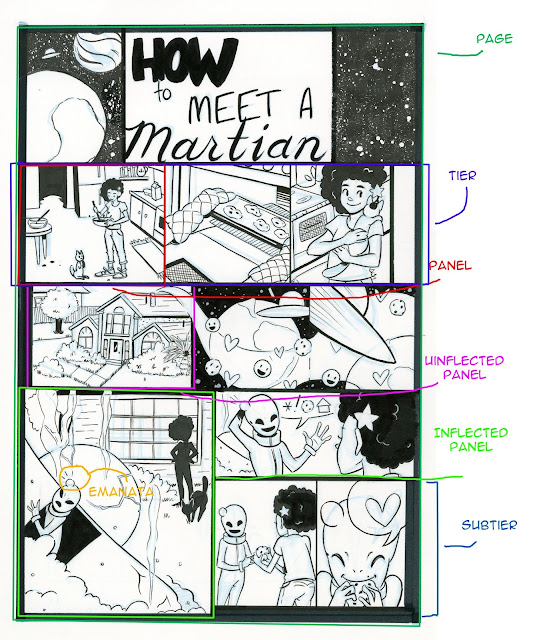Practicing from Studies: Watercolor Basics
This series is also made possible thanks to the generosity and interest of my Patrons on Patreon.
My Watercolor Basics series is a longform, in depth tutorial series aimed at empowering others to pursue their artistic interests. Due to the nature of these series, which require process posts, numerous examples, and in depth research, these posts are extremely resource intense. It is only due to the support and loyalty of my Patrons that I can devote the time, resources, and knowledge to posts like this. To my Patrons, I owe my sincere thanks- without you, there would be no Watercolor Basics or Intro to Comic Craft series.
For only $2 a month, you can join the Artnerd community and help support quality content like this. Your pledge enables me to pay guest artists, purchase supplies for review, and offset some of the costs these in depth posts incur. Your support inspires me to dedicate the time necessary to writing and creating art education content.
Flex Those Art Muscles!
Although I am walking you through a (failed, in my opinion) watercolor study, I do not expect you to copy my process- a huge part of painting from reference is learning how to handle the paints, how to build up color, and how to see the image. When relevant, I have included timelapse watercolor study videos, as sometimes watching how someone handles an image can be a huge help.
When I do serious watercolor studies, I really prefer a paper that can handle a lot of paint- ideally something pre-stretched. I enjoy using Fabriano Artistico on blocks for my smaller watercolor studies- it's a cotton rag paper that can hold A LOT of water and paint, and it's pre-stretched. I use the 5"x7", as they're small enough to complete quickly.
First downfall of the evening- applying masking fluid. This is back when I still thought there was some form of masking fluid that might work for me.
Note how much masking fluid I used- I was masking large areas, rather than just working around them.
The tools of this study:
A selection of rounds, the largest being a synthetic Mimik by Creative mark.
My intentions were good- I wanted to apply even washes of color, and not have to slow down to work around the flowers.
I began with olive green and hunters green. Please keep in mind that while colors look vibrant on first application, they will dull as they dry, and need to be built up.
As the piece progressed, I added in some Winsor and Newton Indigo for the darker foliage shadows.
Lifting out mistakes is fairly easy on cotton-rag watercolor papers.
While paint is wet, or shortly after gently scrubbing with a clean, wet brush, apply a paper towel to absorb paint and water.
Once dry, you can replant or blend out from surrounding area.
To lift my masking fluid, I used a rubber cement eraser.
While masking fluid usually tears up my paper, this was one instance where that did not happen. What DID happen is I now had the large areas of white to fill, areas that had no color influence from the surrounding area.
Other Examples:
Although I love painting flowers, that's not the extent of my repertoire. Painting people, especially realistic people, from reference has really helped me level up my comic painting skills. Below are a small handful of the many referenced portraits I've painted.
Watch the process!
The process video!:
Ecoline watercolor markers and Ecoline liquid watercolors
The below two studies were painted on Ranger Watercolor Cardstock, to help test it for the upcoming review.
Painting common household objects 'from life' (rather than from photos), poses an interesting challenge. Photos are pre-staged- the composition has been figured out for you, but painting from life may require visual resizing and restaging.
I hope I've inspired you guys to expand your watercolor limits and try painting from life and painting from reference! I've found the benefits to my comic watercolor illustration to be huge, and the practice to be relaxing and rewarding.
Speaking of watercolor, today's Watercolor Basic post was brought to you by the webcomic launch of 7" Kara, the comic that has inspired this series! If you enjoy my watercolor art, illustration, or tutorials, please check 7" Kara out on Tumblr or on the 7" Kara site.
If you just can't stand a cliffhanger, Volume 1 of 7" Kara is available on Gumroad and through my web-shop. Volume 1 contains the first four chapters of 7" Kara, and a bonus story, as well as loads of additional illustrations and a concept section!
My Watercolor Basics series is a longform, in depth tutorial series aimed at empowering others to pursue their artistic interests. Due to the nature of these series, which require process posts, numerous examples, and in depth research, these posts are extremely resource intense. It is only due to the support and loyalty of my Patrons that I can devote the time, resources, and knowledge to posts like this. To my Patrons, I owe my sincere thanks- without you, there would be no Watercolor Basics or Intro to Comic Craft series.
For only $2 a month, you can join the Artnerd community and help support quality content like this. Your pledge enables me to pay guest artists, purchase supplies for review, and offset some of the costs these in depth posts incur. Your support inspires me to dedicate the time necessary to writing and creating art education content.
Flex Those Art Muscles!
Although I am walking you through a (failed, in my opinion) watercolor study, I do not expect you to copy my process- a huge part of painting from reference is learning how to handle the paints, how to build up color, and how to see the image. When relevant, I have included timelapse watercolor study videos, as sometimes watching how someone handles an image can be a huge help.
When I do serious watercolor studies, I really prefer a paper that can handle a lot of paint- ideally something pre-stretched. I enjoy using Fabriano Artistico on blocks for my smaller watercolor studies- it's a cotton rag paper that can hold A LOT of water and paint, and it's pre-stretched. I use the 5"x7", as they're small enough to complete quickly.
First downfall of the evening- applying masking fluid. This is back when I still thought there was some form of masking fluid that might work for me.
Note how much masking fluid I used- I was masking large areas, rather than just working around them.
The tools of this study:
A selection of rounds, the largest being a synthetic Mimik by Creative mark.
Watercolor half pans, spritzed to activate them.
My intentions were good- I wanted to apply even washes of color, and not have to slow down to work around the flowers.
I began with olive green and hunters green. Please keep in mind that while colors look vibrant on first application, they will dull as they dry, and need to be built up.
As the piece progressed, I added in some Winsor and Newton Indigo for the darker foliage shadows.
Lifting out mistakes is fairly easy on cotton-rag watercolor papers.
While paint is wet, or shortly after gently scrubbing with a clean, wet brush, apply a paper towel to absorb paint and water.
Once dry, you can replant or blend out from surrounding area.
To lift my masking fluid, I used a rubber cement eraser.
While masking fluid usually tears up my paper, this was one instance where that did not happen. What DID happen is I now had the large areas of white to fill, areas that had no color influence from the surrounding area.
In the end, my flowers stood out too much from the background, and were clumsily handled in regards to how I applied veins and small creases.
Although I love painting flowers, that's not the extent of my repertoire. Painting people, especially realistic people, from reference has really helped me level up my comic painting skills. Below are a small handful of the many referenced portraits I've painted.
Watch the process!
Bonus Timelapse Process Video:
Of course, sometimes I don't have access to nicer papers, or sometimes I don't want to spend forever finessing a study, and I want to capture something quickly. Below are a selection of studies completed in a small Strathmore Visual Journal. The paper is less than ideal- cheap cellulose paper, considered a poor choice even by artists used to working on cellulose woodpulp paper, but I needed to put it through it's paces in order to review it.
Sometimes, finding a cheap paper's limits is a great way to challenge yourself, discover new techniques, and learn new solutions to common problems.
The four studies below were painted on a small (4"x6") Winsor and Newton watercolor paper spiral bound pad.
The process video!:
And while this is the Watercolor Basics series, I highly recommend you practice studies in other media as well!
Mixed media: Alcohol marker and watercolor
Mixed media: Alcohol markers and watercolor
The below two studies were painted on Ranger Watercolor Cardstock, to help test it for the upcoming review.
Painting common household objects 'from life' (rather than from photos), poses an interesting challenge. Photos are pre-staged- the composition has been figured out for you, but painting from life may require visual resizing and restaging.
Speaking of watercolor, today's Watercolor Basic post was brought to you by the webcomic launch of 7" Kara, the comic that has inspired this series! If you enjoy my watercolor art, illustration, or tutorials, please check 7" Kara out on Tumblr or on the 7" Kara site.
If you just can't stand a cliffhanger, Volume 1 of 7" Kara is available on Gumroad and through my web-shop. Volume 1 contains the first four chapters of 7" Kara, and a bonus story, as well as loads of additional illustrations and a concept section!






















Comments
Post a Comment